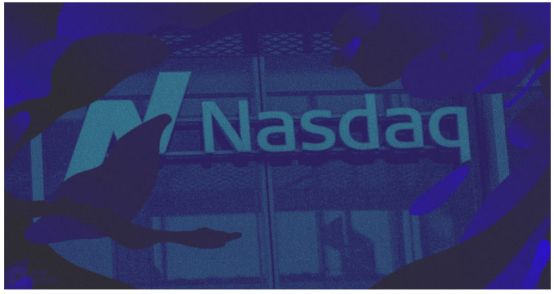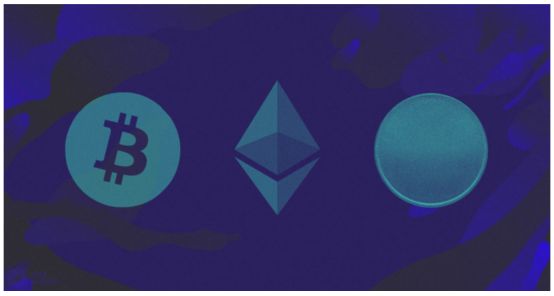A New Decade of Digital Currency Trading: Looking at the Past to See the Future
Author: Tarun Chitra
Translation: Zoe Zhou
Source: Crypto Valley
Editor's Note: The original title was "New Decade of Digital Currency Trading"
- Dry goods | Can quantum computers really destroy blockchain networks?
- The digital currency pilot is expected to land in Shenzhen, and will enter transportation, education, medical and other service scenarios
- China's First Unsecured Blockchain Loan Issuance, Guangdong Launches SME Financing Platform
We are about to enter a new decade. In order to observe how the future of crypto trading has evolved, we need to look at the past of the financial industry first.
Historically, every major change brought about by financial transaction innovation has been accompanied by innovations in business models and technological advances. These innovations include quantitative improvements to valuations (such as using Black-Scholes for option pricing) and allowing new competitors (such as BATS) to enter the electronics market infrastructure.

The development of the past 40 years has changed the traditional market structure and valuation model, and this trend will be maintained in the next 40 years. In the 1980s and 1990s, electronic trading markets and novel valuation models pushed options and futures trading to new heights. Over time, this has led to the emergence of entirely new algorithmic trading and market making transactions, thereby making it easier for passive investments and the overall market to participate in trading activities during the first two decades of the 21st century.
In terms of encryption technology, we have gradually seen a combination of similar business models and technological advances. This is the future trend, such as platform currency, on-chain transactions and borrowing. These “windows” leading to the future financial system are the vane of the new era of encrypted quantitative trading.

Platform currency: Is it business model innovation or regulatory arbitrage?

The boom in crypto trading in 2017 made exchanges and financially proficient industry professionals realize that futures and other derivatives are the most effective packaging methods, thereby reducing customers' concerns about the inherent volatility of digital currencies. As a result, a large number of new digital asset exchanges have emerged, and these exchanges are competing for BitMEX's first-mover advantage and liquidity advantage.
This competition that squeezes the BitMEX market is an amazing business model innovation, namely platform currency. Because most tokens lack utility and accrual value. Everyone naturally thought of the question: Why are these platform coins so special and still accrued? To this end, we need to understand the background of how traditional equity trading venues distribute income.
In traditional equity trading venues, exchanges such as the New York Stock Exchange (NYSE) or the Chicago Mercantile Exchange (CME) will share revenue with market makers and allocate revenue according to the market maker's trading volume. Why would they do this? Because the exchange does not want to take risks alone-it wants to charge fees without doing any maintenance. But they need to ensure that bid-ask spreads are small and meet regulatory requirements, such as supporting RegNMS. These exchanges achieve the above two points by returning commissions. Originally, commissions per share were paid at a rate of 0.01%, but if you trade more than 10,000 shares per day, the exchange will give you a 0.005% discount. This money can be paid quarterly or on a pay-per-view basis.
On the other hand, there are more platform coins that will provide more instant commissions, such as Binance's BNB, FTX's FTT, CoinFLEX's FLEX, or Huobi's HT. So, how do these platform coins work?
- The market maker will continuously receive a return commission, which changes the supply of relevant platform coins (such as new tokens being issued).
- Digital currency exchanges rarely destroy a large number of tokens on their platform, which will increase the value of the platform currency. At the same time, as market makers are quoting these platform currencies (such as providing FTT / USDT bid-ask spreads), they will continue to receive rebates.
- Continuous return commissions allow market makers to better optimize their capital, so they can:
1. Reinvest return commissions in long positions;
2. Take greater risks and leverage;
3. Narrow the bid-ask spread.
Although the New York Stock Exchange (NYSE) and the Chicago Mercantile Exchange (CME) can provide these functions, they are reluctant to do so because these platform currencies are easily recognized as securities by regulators. Therefore, this is why platform currencies are prevalent in Asia and rarely seen in Western countries. These platform currencies successfully encourage emerging market participants to increase liquidity for these digital asset exchanges in ways that traditional exchanges cannot provide. In addition, these platform coins have a feedback loop, which is why you see Binance, Huobi, and CoinFLEX-BitMEX competitors are using these platform coins to gain market share.

What can we learn from the past of the traditional financial industry?

The fierce competition between exchanges is very similar to the early stages of the active stock market in the late 1990s and early 2000s. At the time, in addition to the New York Stock Exchange and Nasdaq, people also traded through other exchanges. At the same time, the US stock market is fragmented and data are problematic. Some large data providers (such as Yahoo Finance and Standard & Poor's) provide hundreds of data of varying quality, and their role is similar to the current CoinMarketCap. Regulators therefore decided to support the regulation of neutral market services to make stock exchanges more centralized, which in turn could improve liquidity and transparency.
Supervision of neutral market services was implemented in 2005, requiring each stock exchange to provide the National Best Buying and Selling Quote (NBBO), thereby ensuring the stability of stock prices. This behavior means that some smaller exchanges have to obey larger exchanges and offer prices that match those of high trading volumes. So unavoidable things happened, and many smaller exchanges closed down due to losses. They lose money because they are forced to offer prices that deviate from their liquidity.
In the end, the boom and bust era of the American emerging stock exchanges ended with billions of dollars in acquisitions by traditional exchanges and banks. This can't help but remind us of a platform currency issue: what would a regulated neutral market service for the digital currency industry look like?

Automated Market Makers: Regulatory Neutral Market Services for Digital Currency?

Speaking of regulating neutral market services, the decentralized nature of the early US stock market is very similar to the decentralized nature of today's digital asset exchanges and on-chain transactions.
In the world of digital currencies, traders can use smart contracts for unmanaged transactions without having to trade on centralized exchanges such as Cionbase, Binace or BitMEX. Until 2019, the user experience of these digital currency exchanges is still not good, such as high fees, security holes, and extremely low value. With the launch of Uniswap and the introduction of new product markets, users of these protocols have noticeably improved in terms of usability, user experience and cost. Uniswap received $ 100,000 in funding from the Ethereum Foundation, and it performed much better than competitors such as Bancor. Because it avoids the mistakes that automated market makers have made, it also optimizes for simplicity (resulting in lower costs).
Let's review what is an automated market maker? We have some methods for assessing assets without a market maker, and these methods have been in the academic literature since the beginning of the century. These methods are often used to predict early markets, but they are used less frequently due to the overly complex user experience and other challenges (such as those of the Lightning Network and the Layer 2 game).
So how does a market maker work?
- Lend assets to a pool and prorate transaction costs from the pool. The lender will replace the market maker, obtain passive income by lending its assets to the pool, and even treat the lender's income as "shared revenue with the exchange", which happens to be a smart contract.
- Play the role of "predictor" and synchronize the price of on-chain and off-chain transactions (such as incentivizing arbitrageurs to keep the ETH / DAI price on Coinbase at a level close to the on-chain exchange).
The simplicity of automated market makers generates a lot of on-chain liquidity. In order to make the token price "ththerized" on digital currency exchanges such as Coinbase / Binance. Automated market makers will change their strategies, starting with no transaction ledger and providing incentives to those who provide tokens to the token library. In addition, those engaged in the development of user interfaces for decentralized trading protocols are easily integrated with Uniswap. This is why Synthetix, a decentralized margin trading contract, can lead the liquidity of Token traders. This contract is also one of the many attempts of the decentralized exchange BitMEX. Synthetix can be regarded as a model for on-chain exchanges to allow new cases to guide liquidity. With the increase in the value of the Synthetix platform's own token, it has also become one of Uniswap's largest assets.
So, what exactly drives the continuous increase of on-chain transaction activities? There may be several reasons:
- KYC audits are becoming more stringent (BitMEX is also reportedly required to comply with EU Anti-Money Laundering Order No. 5);
- Introduce a practical automated market maker design to provide lenders with reasonable (but imperfect) passive income, while also encouraging arbitrageurs to synchronize prices;
- The growth of on-chain borrowing (e.g. Compound) provides traders with important leverage;
- The increasing number of aggregation service providers (such as 1inch, DEX.ag, etc.) proves that market forces can synchronize prices (and reduce fees) in these trading pools without requiring orders.
1. Because the traditional market price synchronization is relative to the national best offer (NBBO), this innovation requires an order.
2. This looks like a decentralized version of a regulated neutral market service and does not require KYC compliance constraints.

How will these changes affect the future of crypto trading?

Considering the emergence of two financial instruments in the digital currency industry in 2019, everyone is guessing how these tools will change crypto trading in the next ten years? Therefore, we analyze from the following four aspects, namely BTC, Ethereum, other Layer1 protocols, and future valuation models.
BTC
- Lightning Network has always been the main form of lending activities on the BTC chain, and lending transactions correspond to the original network value provided by routing. We think Lightning Network will make significant progress in 2020, especially exchanges such as Sparkswap and games such as Lightning Poker continue to improve in terms of user experience and usability.
- Bitfinex mentioned in December that the decentralized exchange will be connected to the Lightning Network and provide more arbitrage opportunities. Because Lay 2 cross-chain solutions will start to have more intrinsic value (such as making Uniswap arbitrage opportunities more valuable).
- Many projects hope to introduce DeFi to BTC through side chains, such as Echo and Money on Chain (based on RSK). These projects will provide ample opportunities for BTC holders who do not want to earn income through cross-chain.
- Cross-chain solutions such as Cosmos and tBTC will help improve liquidity because traders can lend Tokens on one blockchain to another without having to rely on external providers like Genesis or Celsius.
- Lightning network and cross-chain solutions will provide BTC holders with almost all on-chain borrowing and trading profits, while side chains will be difficult to be widely accepted.
Ethereum
- More and more margin trading platforms are beginning to be launched on Ethereum, such as Monte Carlo DEX (BTC trading platform with up to 5 times leverage), UMA and Synthetix. We may see that these projects designed to use novel revenue sharing protocols (such as platform currency, transaction fee pool, etc.) continue to mature, minimizing the use of gas and optimizing the user experience.
- The number of Ethereum loan projects has been increasing, mainly to support transactions. The increasing trend of borrowing pools (such as Compound's support for exchanges / wallets, providing a better user experience through Dharma), and the growing demand for derivative lending tokens will also have a flywheel effect (but we hope this is in line with the 1929 stock market crash Time margin is different).
- Due to the reduced profitability and higher cost of preemptive transactions, private Ethereum transactions will open different transaction methods (such as shielded ERC-20 through the Aztec Protocol).
- Front-end supervision will be stricter.For example, even if Uniswap smart contracts can run on the Ethereum blockchain and everyone can use them, they still restrict users' access to front-end Webapps in some countries.
- In contrast to the advancement of Layer 1, Layer 2 will drive improvements in both transactions and loans for the foreseeable future.
Other Layer 1 protocols
- A large number of protocols will be launched on on-chain exchanges such as Celo. These protocols require exchanges to maintain stability (such as stablecoins) and to provide on-chain liquidity for validators in the early days of the Internet.
- These networks will learn from Ethereum to build liquidity in the loan pool to guide both parties in the transaction.
- Cross-chain solutions will also guide liquidity transfer from existing blockchains such as BTC, ETH, etc. to new chains.
Future valuation model
- As on-chain transactions become more and more mature, actuarial and quantitative tools and technologies for analyzing and protecting the network are advancing with the times.
- Preemptive trading is already a common phenomenon in most Ethereum trading venues. It is expected that more sophisticated trading strategies will emerge to take advantage of the underlying transaction data to occupy major market positions.
- This is an exciting time. Valuation models such as Black-Scholes will have significant improvements, but also stem from improvements in market infrastructure. I expect more tools to be generated in 2020 to evaluate crypto assets.
Due to the advancement of business models and technologies, the new decade of digital currency trading will be very different from the previous decade.

We will continue to update Blocking; if you have any questions or suggestions, please contact us!
Was this article helpful?
93 out of 132 found this helpful
Related articles
- Research | Domestic encryption algorithm combat government affairs alliance chain Can they replace mainstream public chain algorithms?
- Viewpoint | Promoting the modernization of national governance system and governance capabilities
- In 2019, the U.S. Congress frequently moves. What impact will the two crypto-related bills it proposes have?
- Trend prediction: upcoming events in 2020
- Ten important advances in cryptocurrency in 2019
- Blockchain practitioners: 2019 is too difficult for me
- SheKnows Year-end Ultimate Debate | Can Big Companies Get Into the Start?






